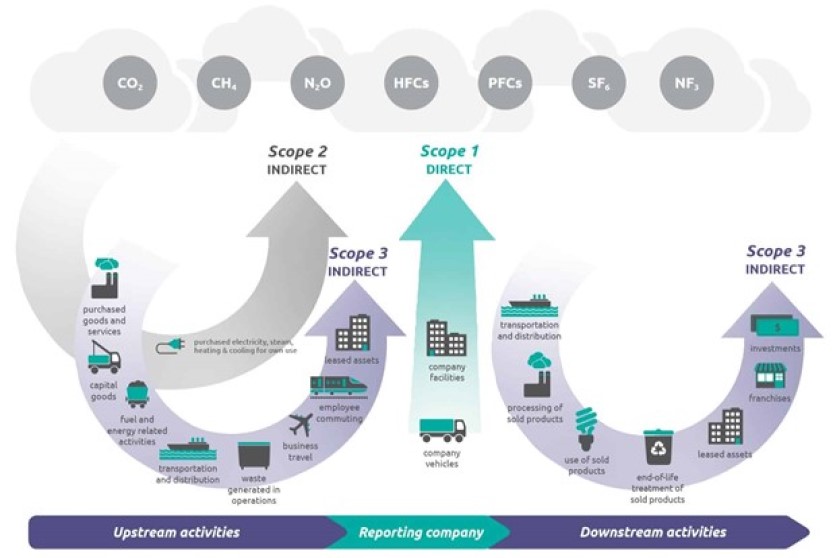What clients are
asking about
colo data
center emissions
Colo data centers are getting more questions about carbon emissions – here’s why and how to answer them.
Across all industries, organizations are increasingly pressuring their suppliers to reduce emissions and improve sustainability reporting. By learning how to effectively measure, manage and report on your greenhouse gas (GHG) emissions, you can support your clients’ climate action goals and deepen their loyalty.
If you find yourself fielding more questions about your colocation data center’s emissions, you’re not alone. As organizations step up their own efforts to reduce and account for GHG emissions, they’re putting more pressure on their vendors, too. Below, we answer three questions that may be on your mind as you sort through how to address clients’ sustainability queries.
Why are clients focusing more on your emissions?
Corporations are under mounting pressure from investors, employees and customers alike to achieve high standards of sustainability—and as a result, they’re calling on their suppliers to help them meet GHG emissions targets.
Expect this pressure to amplify as more organizations make ambitious sustainability commitments—a trend that accelerated over the last year.
At the end of 2020, more than 1,000 leading companies had committed to the achieving Science Based Targets, almost doubling the total of organizations that made this pledge prior. Science Based Targets Initiatives is an organization holding companies accountable to align with the Paris Agreement goals of limiting global temperature rise beyond an additional 1.5 degrees Celsius—a threshold many experts say is critical to staving off the worst effects of climate change.
To reach this ambitious goal, your clients must not only reduce their direct emissions—they must also lower all indirect emissions related to their value chain. Given that data centers are a significant source of emissions, it’s natural that your clients may be asking more questions and asking you to report on your emissions reduction progress in their requests for proposals (RFPs) and contract negotiations.
To help sustain the long-term business and satisfaction of these important clients, now is the time to establish an informed strategy and execute an action plan to reduce emissions in your operations.
Scope 1, 2, and 3 Greenhouse Gas Emissions: What’s the difference?
For reporting purposes, the first step is to understand the three principal GHG “scopes,” meaning the categories for tracking emissions based on the source fuel and business use.
- Scope 1 includes direct emissions from operations. This includes fuel consumed on-site and fleet vehicles.
- Scope 2 covers indirect emissions such as those produced by electricity, steam or chilled water provided through a utility.
- Scope 3 encompasses all other upstream and downstream emissions. This includes emissions produced by waste products, purchased goods and all suppliers, including data center colocation sites.
As a data center colocation site, your Scope 1 and Scope 2 emissions are your clients’ Scope 3 emissions—and that’s why they care about the efforts you are taking to improve energy efficiency and use more clean energy.
How do I prepare to answer client questions about our carbon emissions?
A baseline assessment will help you understand what your carbon footprint is today. Then, it’s important to learn the expectations of key clients and organizations so you can assess where you are currently tracking in relation to their goals. Once you’ve identified the gap between a client’s environmental goals and your current performance, you can create a targeted action plan, complete with appropriate solutions like more efficient equipment, rooftop solar panels or sourcing renewable energy through a power purchase agreement (PPA). Importantly, by knowing your client’s goals, you’ll be equipped to help educate them on your strategy before they ask. You’ll be prepared to proactively engage, maintain high-value clients and win new business from leading companies With trusted, insight-driven support, your team can develop and implement a renewable energy and efficiency strategy that doesn’t just anticipate your clients’ expectations—it exceeds them for shared long-term success.




